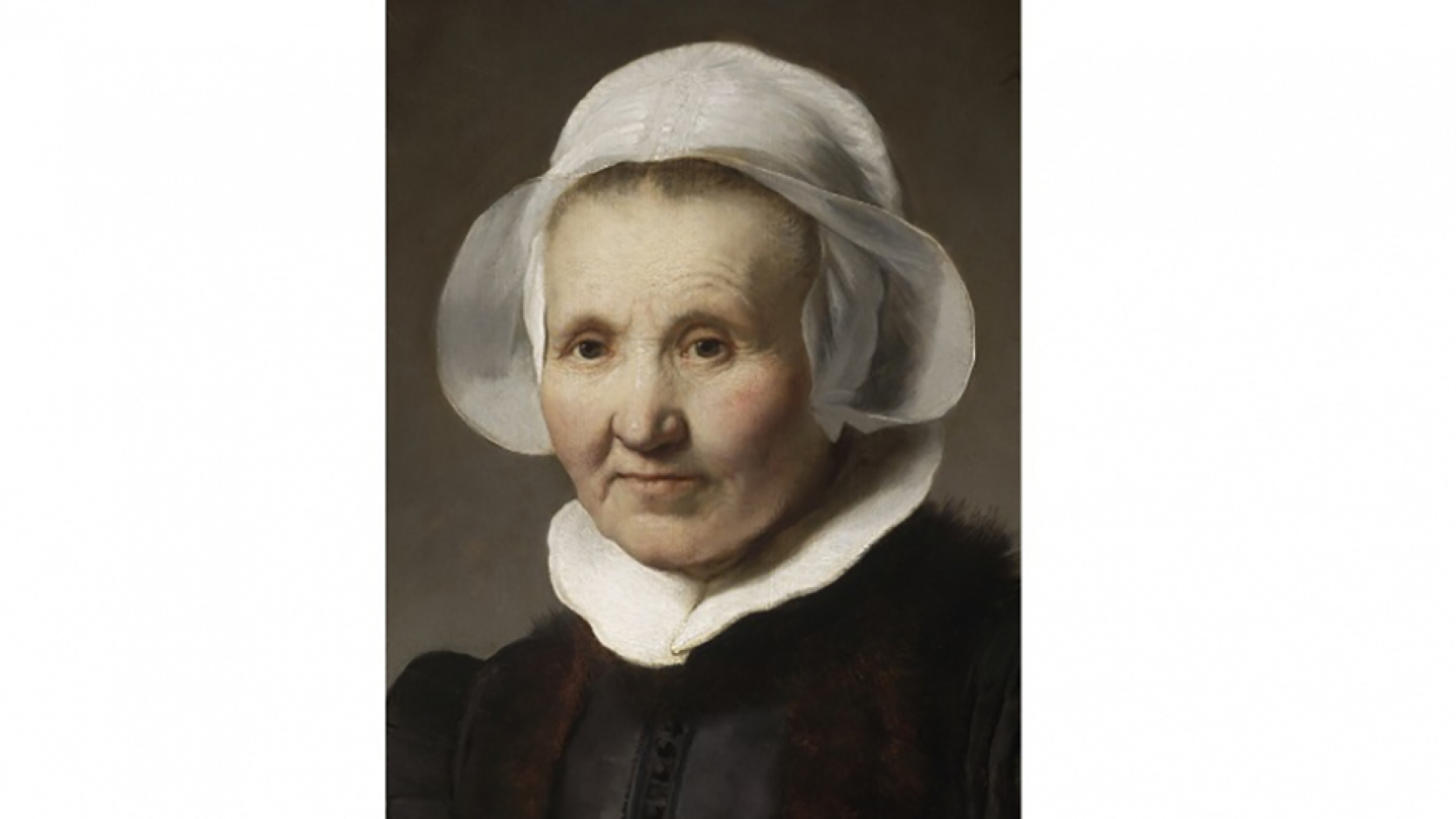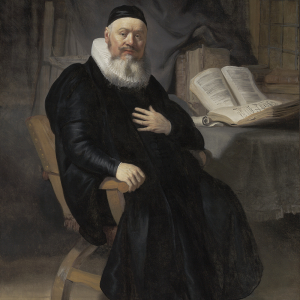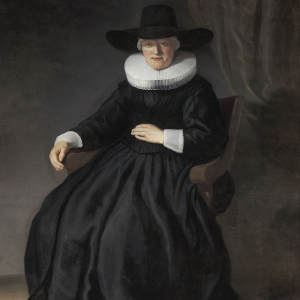Uncovering the hidden details of Dutch art
At the launch of In the Age of Rembrandt: Dutch Paintings from the Museum of Fine Arts, Boston, Director & CEO Josh Basseches spoke with Dr. Ronni Baer about the unique global context in which the Dutch Golden Age was born, what makes this exhibition exceptional and how to tell when someone in the room is cheating at cards.
Josh Basseches: Ronni, each time I talk with you, I learn more about these paintings. Can you start by telling us about how you structured this exhibition?
Ronni Baer: The magic of Dutch painting is that you can appreciate it on so many different levels. Ordinarily, an exhibition would perhaps be divided into types: genre paintings, then landscapes, then still lifes. Here, I wanted to show other ways one can look at this art.
The first room is labelled “The Telling Detail,” where you can look at the paintings and pick out something that’s not quite right, or something that leads you to understand that there’s more than meets the eye. I hope you’ll appreciate how important it is to look closely and understand the people who created this art—how it reflects the society in which it was made. Because the closer you look, the more rewarding it is.
JB: You’re absolutely right. These paintings are ones that benefit from close looking. It’s a little bit like unwrapping a present. You first get the excitement of seeing the whole present with its wrapping and its bow, and then with each layer you unwrap, you get deeper into it. Could you pick out one thing in a painting that surprised you, that you didn’t know about until you looked closely at it?
RB: There’s a snow scene by the artist Aert van der Neer—he’s not an A-list painter, he’s probably B-list, but this is the greatest painting of his I’ve ever seen. What sets this work apart is the wind, and people’s clothes being whipped around by the wind. After [van der Neer] finished painting it, he went in and dotted snowflakes falling—there are so many snowflakes he dotted in—and they follow the way the wind is blowing, something you don’t necessarily see in a reproduction. But when you stand in front of the painting, you’re like, “Oh my gosh, this guy. He really understood cold.”
JB: What makes the body of work on view at the ROM so exceptional?
RB: The condition of these paintings. These works are approximately 350 years old and the condition in which these paintings have survived is remarkable. The history of a work of art is written on its surface, if you know how to look.
JB: I think that sometimes people don’t quite understand that if you go and see 350-year-old paintings in collections, even in museums, many of them have been onserved repeatedly, worked and reworked. And these examples show you what the original painters were seeking to do in their work. I agree with you, that’s quite exceptional. Now why was the 17th century called the Golden Age?
RB: I think it was because of the activity of so many gifted artists. In the 17th century, the northern Netherlands broke way from the southern Netherlands and by breaking away, the North became a Protestant state without a monarchy. So, in most of the rest of Europe you have the church and the state commissioning a lot of paintings, whereas in the northern Netherlands, you have an oligarchy.
It was golden because of the great outpouring of art. And here were people at all levels of society buying art. It was golden because this mercantile society was a leader in so many ways—it was a leader in science, global exploration, hipbuilding, linen bleaching, beer production, everything. It was just an amazingly rich society.
I almost never use golden, but it is pretty fitting, and I imagine this must be one of the reasons that you wanted to bring such an exhibition to the ROM. Is that right?
JB: There are so many reasons I was delighted with the opportunity to present this exhibition at the ROM. They are exceptional works and we are so pleased to present them to the public of Toronto and Ontario and beyond. This exhibition also connects so well to things that we care about deeply here at the Museum, that are very much in the ROM’s DNA.
The ROM is one of the most encyclopedic museums in the world and we express the worlds of art, culture, and nature under one roof. The Dutch 17th century was an era when people were trading around the world, making global connections between art, culture, science, and nature. This exhibition makes a particularly good connection with the ROM’s collection, where you can walk from this exhibition to the European galleries, and then to other parts of the museum where you can learn about the science and the other cultures that the Dutch were exploring.
Which paintings in the show do you think people should make a point of seeing?
RB: I love them all, they’re like my children. You feel kind of guilty signaling one over another.
Aeltje, whom you are familiar with as the signature image of the exhibition, is one of the greatest Rembrandts still in private hands. You can meet her personally in the exhibition. The painting of Aeltje is not only virtuosic and in extraordinary condition, but it is also historically significant as it bridges Rembrandt’s Leiden and Amsterdam periods, providing a crucial link in understanding how the young artist made his way in the capital by allying himself with the dealer Hendrick van Uylenburgh, who was also Aeltje’s cousin.
There’s a lovely picture in the first section of the exhibition by Jan Steen of a woman cheating at cards. If you go and look, you’ll see why Jan Steen is such a popular artist then and now.
Then there is a Gerrit Dou selfportrait that shows fine painting in a most remarkable way. Dou was more famous than Rembrandt into the 19th century. But when the idea of genius supplanted craftsmanship, Rembrandt grew in prominence over Dou.
There are two full-length portraits by Rembrandt in the last room that are funny. In the first place, they are a great representation of Rembrandt’s style in the 1630s when he was making his way in Amsterdam. They are full length, and there are only three pairs of full-length portraits by the artist still in existence. We are really lucky to have them.
I say funny because these portraits are of a minister and his wife, full- length portraits by the most important portrait artist working in Amsterdam at the time, but it was their son who commissioned them. So, they show the son’s pretensions, not the sitters’, who were living in England and only in Amsterdam for a visit—can you imagine how large their son’s house had to be in order to accommodate these pictures?
I love the story behind them, and they also show you Rembrandt as he is developing his portrait business in Amsterdam after he paints Aeltje.
It’s a beautiful thing that at the beginning of the exhibition we see Aeltje and at the end we see Reverend Elison and his wife, starting and ending with Rembrandt, coming full circle.
Left to right: 1) Rembrandt van Rijn, Reverend Johannes Elison, 1634. Oil on canvas. 174.0 × 124.5 cm. William K. Richardson Fund. 56.510. Courtesy Museum of Fine Arts, Boston. 2) Rembrandt van Rijn, Maria Bockenolle (Wife of Johannes Elison), 1634. Oil on canvas. 174.9 × 124.1 cm. William K. Richardson Fund. 56.511. Courtesy Museum of Fine Arts, Boston.






